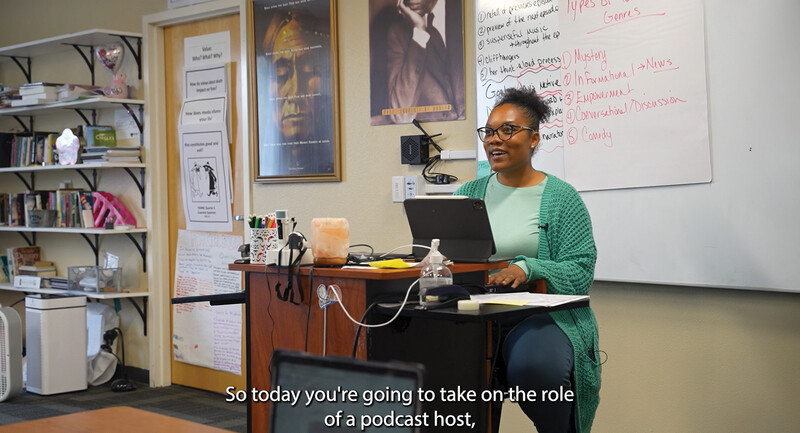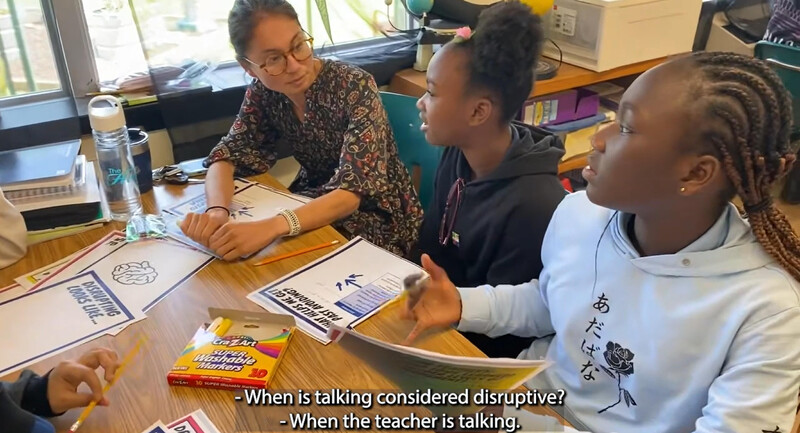The other day I looked at my calendar and was shocked to see that the word January was clearly written on the top of it. January? How could this be? Where has the time gone? What have I done with first half of the school year? It seems as if it were only yesterday that we were going over rules and regulations and learning each other’s names.
But, oddly enough, it is January, and a lot has happened since those early days of the school year. Needless to say, much has changed since day one. Your lesson plans have changed. Your instructional methods have changed. Your presence in your classroom has changed. All these changes have come about because of one simple reason: you and your students are no longer strangers.
As students grow up and rules are loosened, it is also necessary to take a look at the instruction your students are receiving from you. How are you asking them to complete their work? What types of activities are they engaging in on a daily basis? Group work? Individual writing assignments? Are you giving your students the type of lessons that you would want to sit through if you were in their shoes?
The ability to enter a classroom and in one lesson provide a holistic class a variety of teaching methods is the basis of differentiated instruction. To learn more about differentiated instruction, I sat down with author, blogger, podcaster, and puppeteer Sam Patterson. I asked him one simple question: in what ways can we differentiate our classroom instruction? Here are four pieces of advice he gave me.
Give Students Choice
“Find ways to have students choose ways to show you that they understand.”
The other day, I was working with a teacher who had a stack of multiple choice tests in her hand. She told me that she would be spending the weekend grading each of them by hand because the process was very tedious and she didn’t have time during the work day to finish this task. This started a conversation about other ways to assess learning in her classroom. We talked about creating projects, student-made videos, and even various drawings or diagrams to show off the fact that students were learning in her class.
Sometimes, the best way to differentiate is to actually allow students to dive into their own individual learning styles. For many subject areas, this is easy and practically done for you. In music class, for example, students differentiate based on their own learning styles automatically. They choose an instrument that generally fits their body type and personality. Then, during rehearsals, the music presents a series of challenges that can only be properly navigated as a group when individual students implement various learning techniques.
Instead of always giving a multiple choice test, what if you asked your students to make a video, create an e-publication, or even stand in front of the class and, as Patterson suggests, do an interpretive dance. By allowing students to come up with and explain their answers based on their strengths, you will have a better chance of having more productive students.
Collect Student Data
“When we are differentiating instruction in our classrooms, we are adjusting our lessons to meet our students’ needs. How do we know if we are meeting our students’ needs . . . by collecting data.”
Whether you are a teacher with the same 30 students all day, every day or you have 130 students throughout the week for 45 minutes at a time, it is imperative that you take time out of your day to collect some simple pieces of data about your students to help you plan your lessons. There are several great apps to help you do this. My favorites are Evernote, Google Keep, and OneNote. If you have solid data about how your students are learning in your classroom, you can then begin to adjust your instruction based on how they learn, rather than how you would like to teach.
Step Outside of the Curricular Box
“You may have to author some of your own support pieces and supply different interactive activities than the publisher provided. While publishers want to create something that serves as many students as possible, they have never met the students in your classroom.”
Many teachers these days come out of college and are handed a prepackaged curriculum that is bought from a publisher. They have all of their lesson plans created for them, and all of the handouts are either online or ready to be printed. You would think teaching should always be this easy. However, to truly provide students with a proper learning environment, master teachers take the time to assess the given content and go a step farther to create materials that not only fit the lesson sequence but also keep students’ learning styles in mind. These types of materials can be in the form of podcasts, e-books, infographics, and even puppet shows.
Use a Flipped Classroom Model
“When we ask students to share what they know, one of the ways we can have them do that is to create their own podcasts. Students can create podcasts to demonstrate their understanding of a subject to share with a teacher or their fellow students, and teachers can create support materials as in a flipped class format or podcast format to allow students to engage with those instructional challenges at their own pace.”
More and more these days, teachers are turning to premade video and audio content to supplement their learning environment. To create a podcast, all you really need is your cell phone and a free app such as Voice Recorder. My favorite audio recording app, though, is Evernote because it has a very simple interface and syncs up to the cloud so you can quickly have a file on your desktop to edit or post online for your students to consume. For more information on creating your own audio and video content, check out the resources on Educational Podcasting Today.
What advice would you have for teachers who are looking to creatively differentiate their classroom instruction?








